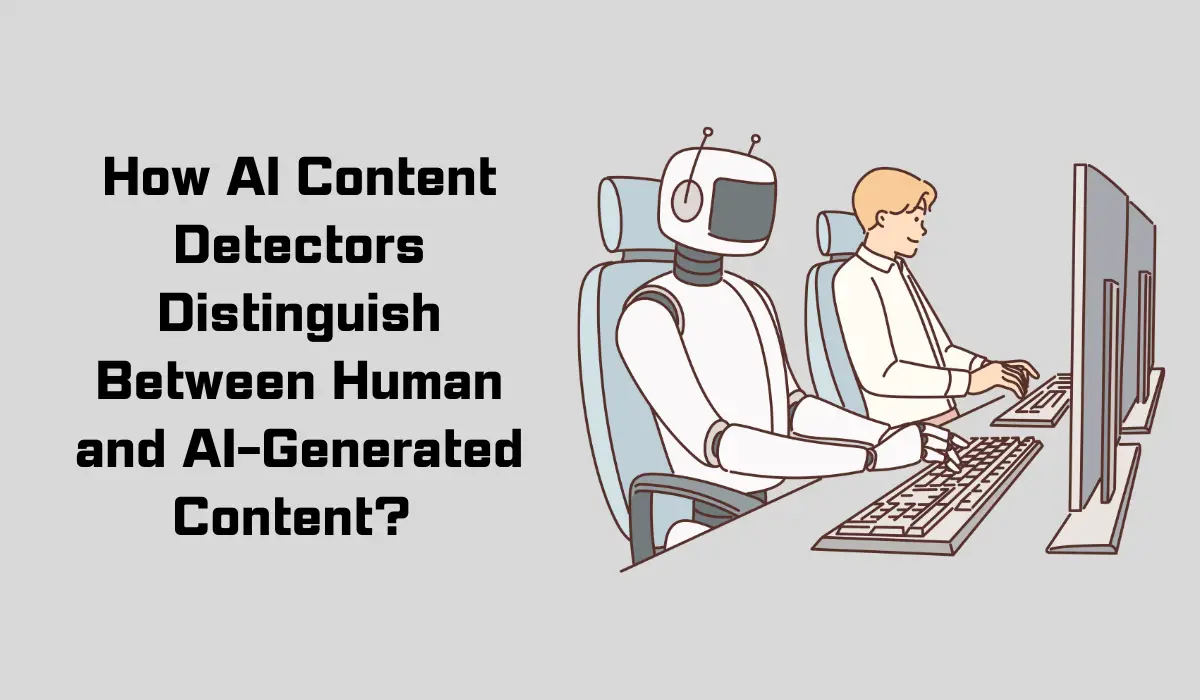With the growing power of AI, it’s becoming harder to spot the difference between human and machine writing. In 2023, nearly three out of every four marketers, precisely 75.7%, are turning to AI tools for their work.
This AI technology can sometimes be used for unethical purposes. Al can also generate content that is unauthentic since the data fed to these tools is limited. That’s where the line between what’s real and what’s not can blur.
Humans feel better when they know the origin of the content. Knowing who or what wrote the content can affect our trust in the information.
This is where AI content detectors step in. These tools are perfect in detecting the origin of the text. They can tell us if what we’re reading is written by a person or a machine.
We can know in an instance if we’re dealing with genuine human thought or a computer’s data-driven logic.
This is how AI content detectors have made their mark in the digital world. This article will focus on the details of how these tools differentiate between AI-generated and human-written content. But first let’s discuss the differences between AI-generated content and human-written content.
Distinguishing Features Between Human and AI-Generated Content
Ai content detectors look for subtle nuances of the content to detect the difference between the two. These differences are:
1. Differences in language patterns and syntax:
Humans and AI often use language differently.
For example, AI might stick to more formal or standard language rules, while humans might use slang or colloquial expressions.
2. The uniqueness of human thought process versus AI logic:
Humans have unique thought processes that can be reflected in their writing. AI, on the other hand, uses logic and data to generate content, which may lack the depth of human insight.
3. Detection of repetitive patterns in AI content:
AI often relies on data it has been fed, leading to the repetition of phrases or patterns. Human writing tends to be more varied and less predictable.
5. Understanding the role of context:
AI can sometimes struggle with context or shift topics abruptly because it lacks a real understanding of the content. In contrast, human authors generally maintain a coherent flow and context in their writing.
Now that we know the differences between these languages, let’s find out how AI content detectors work.
How AI Content Detector Detect AI-Generated Content
AI content detector is a bit like detectives, sifting through words and sentences to figure out who or what wrote them. These detectors look for subtle differences in how humans and machines use language.
AI Algorithms: How the Detectors Decide
AI content detectors use specific algorithms to make educated decisions. They use specifically three methods which include supervised learning, unsupervised learning, and reinforcement learning.
- Supervised learning involves training the tool on lots of examples. Both human and machine-written text. This way, it learns to recognize the patterns that each type of author uses.
- Unsupervised learning is a bit different – here, the detector is left to figure out the patterns by itself.
- Finally, in reinforcement learning, the detector gets feedback on its decisions. If it gets the answer right, it’s rewarded. Over time, this helps the detector make better decisions.
The Fuel of the Engine: Why Data Matters
Data is like fuel for AI content detectors. AI content detectors continuously improve their ability to differentiate between human and machine-written text by learning from the examples they encounter, much like how we humans learn from experience.
Detect AI-Generated Content: A Step-by-Step Guide
Let’s take a practical look at how one of these detectors functions using the AI content detector available at ParaphrasingTool.ai, which is freely accessible to anyone.
Follow these steps for using the AI content detector;
Step 1. We’ll use a paragraph generated by ChatGPT-3, a popular AI writing tool.

Step-2. Next, go to ParaphrasingTool.ai and find the AI content detector. Paste the text into the box.

Step-3. Click on the button that says “Detect GPT Zero”.

Step-4. This will take a few seconds and the tool will show detect whether the content is written by humans or AI.
And these are the straightforward steps anyone can follow to discern between content written by humans or generated by machines.
Conclusion
The present world has become saturated with AI text-generation tools. With this advancement, the task of finding the difference between human and AI-generated content has also become challenging.
With AI content detectors, we’ve got a powerful tool to tackle it. They work like literary detectives, peeling back layers of language to reveal the true author. Whether we’re marketers, writers, or simply consumers of content, understanding this distinction is vital.
As we stride further into an AI-empowered future, we must learn to navigate this complex landscape. As the art of writing has a new player called AI. With AI content detectors we’re learning to appreciate and decipher its unique penmanship.


